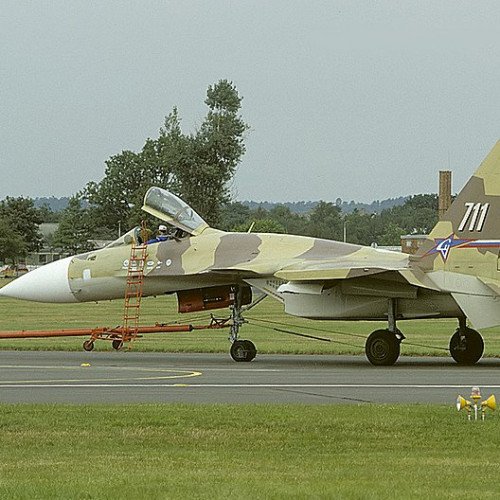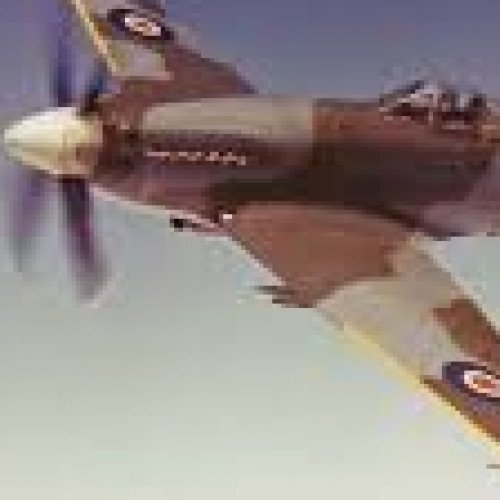Sukhoi Su-37 vs Supermarine Spiteful

Sukhoi Su-37
The Sukhoi Su-37 (Russian: Сухой Су-37; NATO reporting name: Flanker-F; popularly nicknamed "Terminator") was a single-seat twin-engine aircraft designed by the Sukhoi Design Bureau that served as a technology demonstrator. It allowed for the need to enhance pilot control of the Su-27M (later renamed Su-35), which was a further development of the Su-27. The sole aircraft had originally been built as the eleventh Su-27M (T10M-11) by the Komsomolsk-on-Amur Aircraft Production Association before having its thrust-vectoring nozzles installed. In addition, it was modified with updated flight- and weapons-control systems. The aircraft made its maiden flight in April 1996. Throughout the flight-test program, the Su-37 demonstrated its supermanoeuvrability at air shows, performing manoeuvres such as a 360-degree somersault. The aircraft crashed in December 2002 due to structural failure. The Su-37 did not enter production; despite a report in 1998 which claimed that Sukhoi had built a second Su-37 using the twelfth Su-27M airframe, T10M-11 remained the sole prototype. Sukhoi had instead applied the aircraft's systems to the design bureau's other fighter designs.
Statistics for this Xoptio

Supermarine Spiteful
The Supermarine Spiteful was a British Rolls-Royce Griffon-engined fighter aircraft designed by Supermarine to Air Ministry specification F.1/43 during the Second World War as a successor to the Spitfire. It had a new wing design, to improve its critical Mach number and allow safe operations at higher speeds. The new design also had a modern inwards-retracting undercarriage. Other changes included a larger fin to improve the somewhat marginal stability of Griffon Spitfires and changes to the mounting of the engine to tilt it down slightly for better visibility over the nose.